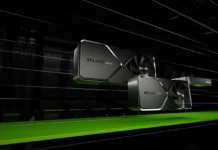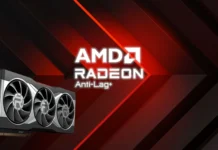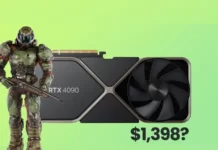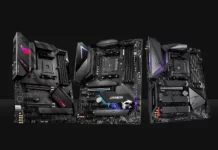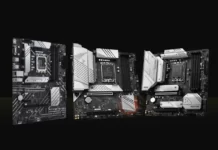The details of AMD’s RDNA 3 GPUs, including the Navi 31, Navi 32, and Navi 33 chips that will power their upcoming Radeon RX 7000 series graphics cards, are covered in great depth by tech publication Angstronomics.
According to previously leaked information found in the Linux patches, there will be at least four RDNA 3 IPs released for the consumer market. These comprise an APU design, Navi 31, Navi 32, and Navi 33.
| GRAPHICS ARCHITECTURE | GPU CODENAME | ALTERNATIVE NAME | ARCHITECTURE | PRODUCT |
|---|---|---|---|---|
| GFX900 | VEGA 10 | GCN 5.0 | RX VEGA / Radeon Pro | |
| GFX902 | RAVEN | Raven Ridge / Picasso | GCN 5.0 | Ryzen 2000/3000(G/GE) |
| GFX904 | VEGA 12 | GCN 5.0 | Vega Pro 20 (MAC) | |
| GFX906 | VEGA 20 | GCN 5.0 | Radeon VII / Radeon Pro VII | |
| GFX908 | ARCTURUS | CDNA 1 | Instinct MI100 | |
| GFX90A | Aldebaran | CDNA 2 | Instinct MI200 | |
| GFX909 | RAVEN2 | GCN 5.0 | TBC | |
| GFX909 | RENOIR | GCN 5.0 | Ryzen 4000(H/U/G) | |
| GFX1010 | NAVI 10 | RDNA 1 | RX 5700/5600(M/XT) | |
| GFX1011 | NAVI 12 | RDNA 1 | PRO 5600M (MAC) | |
| GFX1012 | NAVI 14 | RDNA 1 | RX 5500 (M/XT) | |
| GFX1030 | NAVI 21 | Big Navi / Sienna Cichlid | RDNA 2 | RX 6900/6800 Series |
| GFX1031 | NAVI 22 | Navy Flounder | RDNA 2 | RX 6700 Series |
| GFX1032 | NAVI 23 | Dimgrey Cavefish | RDNA 2 | RX 6600 Series |
| GFX1033 | NAVI 24 | Beige Goby | RDNA 2 | RX 6500/6400 Series |
| GFX1033 | Van Gogh | Aerith | RDNA 2 | Steam Deck |
| GFX1036 | Navi 2X | Raphael | RDNA 2 | Radeon 700M |
| GFX1040 | VAN GOGH LITE | VAN GOGH LITE | RDNA 2 | TBC |
| GFX1100 | Navi 31 | Plum Bonito | RDNA 3 | Radeon RX 7000 |
| GFX1101 | Navi 32 | Wheat Nas | RDNA 3 | Radeon RX 7000 |
| GFX1102 | Navi 33 | Hotpink Bonefish | RDNA 3 | Radeon RX 7000 |
| GFX1103 | Navi 3X | Phoenix / Pink Sardine | RDNA 3 | Radeon 700M |
| GFX1200 | Navi 4X | RDNA 4 | Radeon RX 8000? |
Angstronomics has recently published data on die sizes, GPU setups, and features that could appear in finished retail goods. An intriguing claim made by the tech publication claims that Navi 3X GPU configurations were initially conceptualized in 2019 and then finalized at some point in 2020. These standards have not changed subsequently, although several rumors have identified two different GPU specifications, indicating that AMD may have altered their final designs or that the rumors were untrue. Look at the standard configurations of the Navi 3x “RDNA 3” GPU lineup.

AMD revealed that their RDNA 3 GPUs, which feature a significant performance boost, will be released later this year. David Wang, Senior Vice President of Engineering, Radeon Technologies Group, stated that the new GPUs for the Radeon RX 7000 series will provide a 50% increase in performance per watt over the RDNA 2 GPUs now in use. The following are some of the significant RDNA 3 GPU characteristics that AMD will highlight-
- 5nm Process Node
- Advanced Chiplet Packaging
- Rearchitected Compute Unit
- Optimized Graphics Pipeline
- Next-Gen AMD Infinity Cache
- >50% Perf/Watt vs. RDNA 2
Gamers should expect fluid 4K gameplay to be buttery smooth on these graphic cards. With the FidelityFX suite’s support for next-generation FSR, SAS, and SAM, we might see workable 60 FPS at 8K resolution.
AMD Navi 31 “Plum Bonito” GPU Configuration
The Radeon RX 7900 XT graphics card and other next-generation enthusiast cards would be powered by AMD Navi 31 GPU, the top-tier RDNA 3 processor. We’ve heard that AMD would replace its next-generation RDNA 3 GPUs’ compute units with workgroup processors. Dual CU will be housed in each WGP, but there will be four SIMD32 clusters per CU instead of two on each CU in RDNA 2. According to rumors, AMD has the choice of the 6nm die from TSMC or Samsung.
- AMD Navi 31: 308mm2 GPU Die @5nm, 12288 Cores, 384-bit Bus, 192 MB Infinity Cache.
- AMD Navi 21: 520mm2 GPU Die @7nm, 5120 Cores, 384-bit Bus, 128 MB Infinity Cache.
According to the most recent information, the AMD Navi 31 GPU with RDNA 3 architecture is anticipated to feature a single GCD with 48 WGPs, 12 SAs, and 6 SEs. There will be a total of 12,288 stream processors distributed as a result. This represents a 2.4x increase in cores above the 5120 SPs found in the Navi 21 GPU. According to reports, the Navi 31 GCD, often known as the GPU, would be packaged on TSMC’s 5nm production node and measure 308mm2.

The Navi 31 GPU will also include 6 MCDs, each of which will have a 16 MB Infinity Cache. Additionally, these MCDs are anticipated to include 64-bit (32-bit x 2) memory controllers, giving the device a 384-bit bus interface. There is a 3D-Stacked solution in development that would increase the Infinity Cache with 32 MB (16 MB 0-hi + 16 MB 1-hi) capacity for a total of 192 MB of cache, even though this equates to 96 MB of Infinity Cache, which is less than the 128 MB featured on the current Navi 21 GPUs. With a 50% improvement over the current Navi 21 design, Navi 31 is the first GPU to feature chipset and 3D layered designs. These chipsets, also known as MCDs, will be produced on TSMC’s 6nm production node and have a 37.5mm2 surface area each.
The source claims that a 288 MB (16 MB 0-Hi + 16 MB 1-Hi + 16 MB 2-Hi) MCD package was originally intended but was abandoned for cost-benefit considerations. There are rumors of a scaled-down Navi 31 GPU, which will have 42 WGPs or 10,752 cores, 5 MCDs for 80MB Infinite Cache, and a 320-bit bus interface.
As a result, there will be a higher power draw, and AMD appears to have confirmed this. However, their array of next-generation graphics cards will still be more energy-efficient than what NVIDIA has to offer, despite having higher power usage. For a >2x performance increase, the AMD Radeon RX 6950 XT already has a TBP of 335W. The revised triple-fan cooling design, a little bit bigger than the one presently in use, is expected to remain on the cards, along with its dual 8-pin connector input for power.
AMD Navi 32 “Wheat Nas” GPU Configuration-
One of the two MCM GPUs in the RDNA 3 range is the AMD Navi 32 GPU, known by the codename “Wheat Nas.” The GPU will have four MCDs and one GCD (Graphics Compute Dies) (Multi-Cache Die). While each MCD will remain the same size at 37.5mm2, the GPU or GCD is claimed to measure 200mm2.
- AMD Navi 32: 200mm2 GPU Die, 7680 Cores, 256-bit Bus, 64 MB Infinity Cache
- AMD Navi 22: 335mm2 GPU Die @7nm, 192-bit Bus, 2560 Cores, and 96 MB Infinity Cache
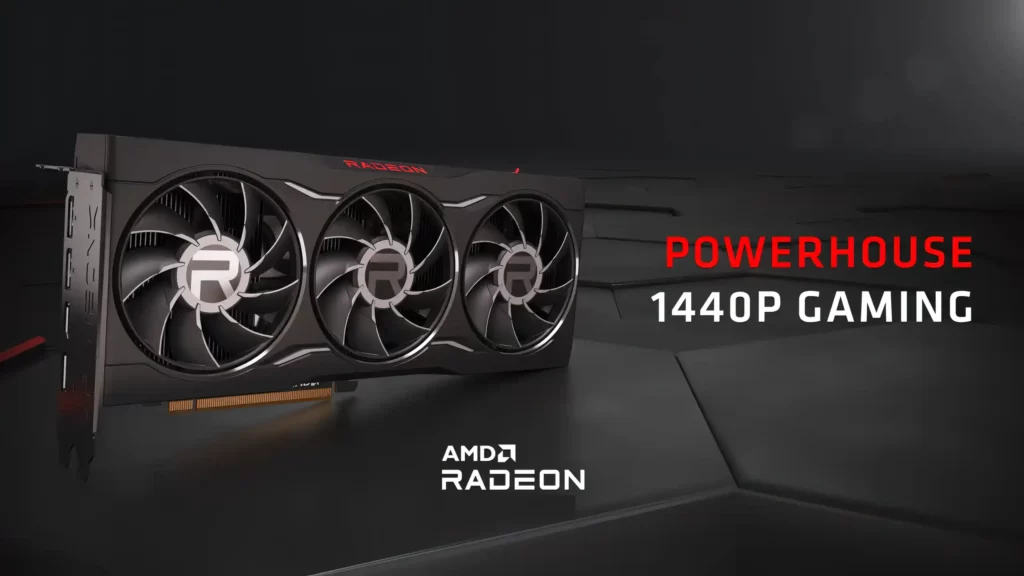
The GCD will have three shader engines, each of which has six shader arrays (18 in total). The GPU will have 60 compute units, or 30 WGP, for a total of 7680 cores. This adds up to more than half as many cores as the Navi 31 flagship.
Additionally, each MCD should have two memory connect links (32-bit). A 256-bit bus interface provides a total of 8 32-bit memory controllers available. Each MCD will continue to have a 16 MB 0-Hi capacity, but there does not appear to be a 1-Hi option, so the chip will only have a 64 MB maximum number of configurations. According to reports, the Navi 32 GPU will debut in 2023 and become a top mobile processor and a mid-tier desktop chip. Since we would have Phoenix Range and Dragon Range laptops with Zen 4 cores available by then, it makes sense that the GPU would be released first for the mobile segment and might be unveiled at CES 2023.
AMD Navi 33 “Hotpink Bonefish” GPU Configuration-
The monolithic part of the RDNA 3 family will begin with the AMD Navi 33 GPU, sometimes known as “Hotpink Bonefish.” A single die will be present in the GPU. The device, expected to be fabricated using a 6nm production node and have a die size of 203mm2, is extremely comparable to the flagship Navi 21 GPU.
- AMD Navi 33: 4096 Cores, 128-bit Bus, 32 MB Infinity Cache, 335mm2 GPU Die @6nm
- AMD Navi 23: 2048 Cores, 128-bit Bus, 32 MB Infinity Cache, 237mm2 GPU Die @7nm

The Navi 33 GCD is anticipated to include two Shader Engines, each containing two Shader Arrays (two per SE, for a total of four). This amounts to 16 WGPs or 32 Compute Units, more than the Radeon RX 6800 “Navi 21 XL” GPU’s 4096 cores. A 128-bit wide bus and 32 MB of Infinity Cache, the same quantity as the Navi 23 GPU, will be included in the GPU’s packaging. The Navi 33 processors, like the Navi 32 GPUs, will primarily focus on the mobile portfolio. Early graphics performance will place them ahead of the Intel Arc Alchemist series at less than half as much and consume less power.
The source also discusses two additional capabilities available on AMD RDNA 3 Navi 3x GPUs for Radeon RX 7000 series graphics cards.
According to sources, the flagship Navi 31 GPU will be on sale first, followed by the Navi 32 and Navi 33 GPUs in the AMD Radeon RX 7000 “RDNA 3” GPU portfolio based on the Nav 3x GPUs.
AMD RDNA 3 Navi 3X GPU Configurations
| GPU NAME | NAVI 21 | NAVI 33 | NAVI 32 | NAVI 31 | NAVI 3X |
|---|---|---|---|---|---|
| Codename | Sienna Cichlid | Hotpink Bonefish | Wheat Nas | Plum Bonito | TBD |
| GPU Process | 7nm | 6nm | 5nm/6nm | 5nm/6nm | 5nm/6nm |
| GPU Package | Monolithic | Monolithic | MCM (1 GCD + 4 MCD) | MCM (1 GCD + 6 MCD) | MCM (TBD) |
| GPU Die Size | 520mm2 | 203mm2 (Only GCD) | 200mm2 (Only GCD) 425mm2 (with MCDs) | 308mm2 (Only GCD) 533mm2 (with MCDs) | TBD |
| Shader Engines | 4 | 2 | 4 | 6 | 8 |
| GPU WGPs | 40 | 16 | 30 | 48 | 64 |
| SPs Per WGP | 128 | 256 | 256 | 256 | 256 |
| Compute Units (Per Die) | 80 | 32 | 60 | 96 | 128 (per GPU) 256 (Total) |
| Cores (Per Die) | 5120 | 4096 | 7680 | 12288 | 8192 |
| Cores (Total) | 5120 | 4096 | 7680 | 12288 | 16,384 |
| Memory Bus | 256-bit | 128-bit | 256-bit | 384-bit | 384-bit x2? |
| Memory Type | GDDR6 | GDDR6 | GDDR6 | GDDR6 | GDDR6 |
| Memory Capacity | Up To 16 GB | Up To 8 GB | Up To 16 GB | Up To 24 GB | Up To 32 GB |
| Memory Speed | 16-18 Gbps | TBD | TBD | 20 Gbps | TBD |
| Memory Bandwidth | 512-576 GB/s | TBD | TBD | 960 GB/s | TBD |
| Infinity Cache | 128 MB | 32 MB | 64 MB | 96/192 MB | TBD |
| Flagship SKU | Radeon RX 6900 XTX | Radeon RX 7600 XT? | Radeon RX 7800 XT? Radeon RX 7700 XT? | Radeon RX 7900 XT? | Radeon Pro |
| TBP | 330W | ~150W | ~250W | ~350W | TBD |
| Launch | Q4 2020 | Q4 2022? | Q4 2022? | Q4 2022? | 2023? |

